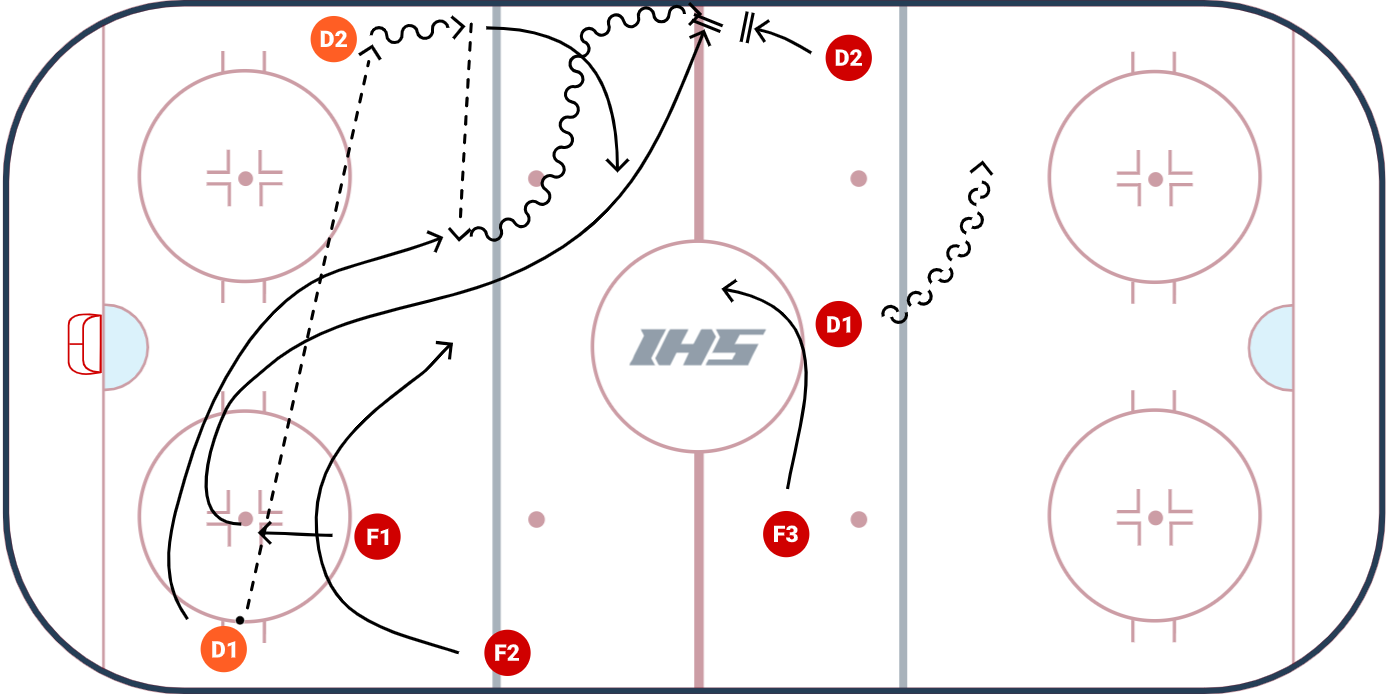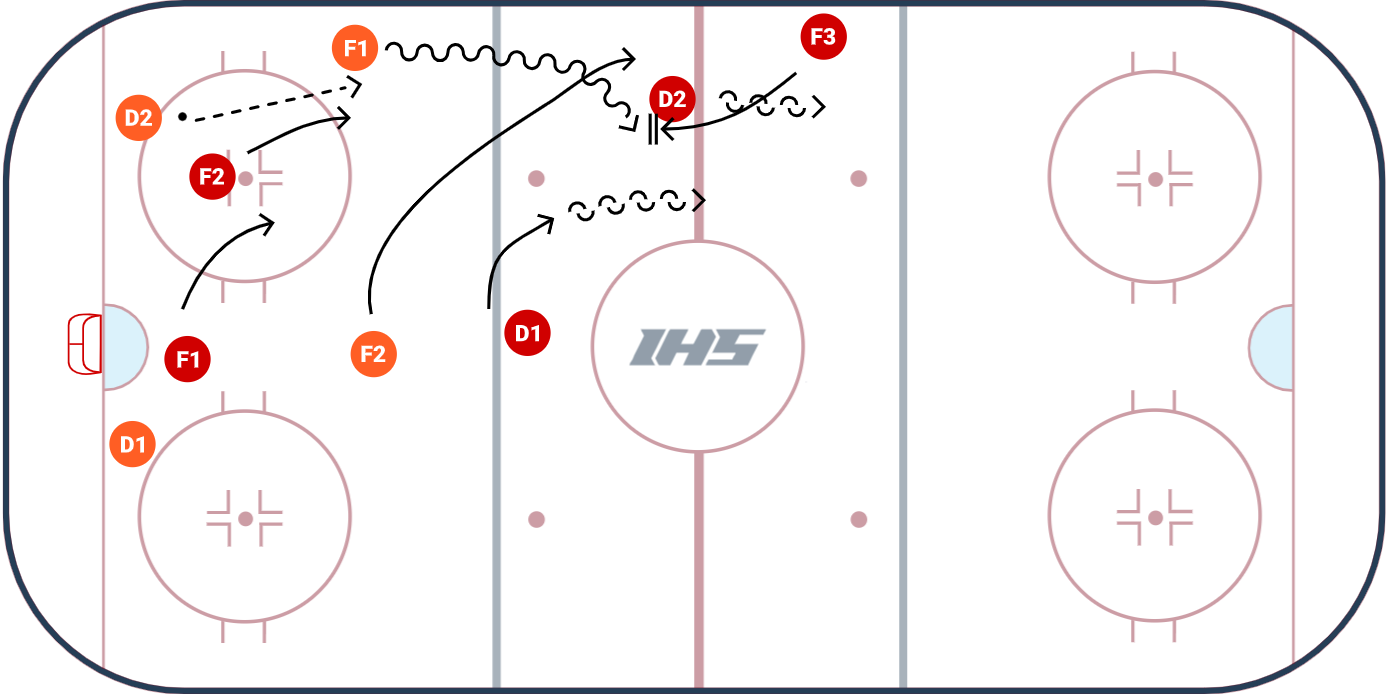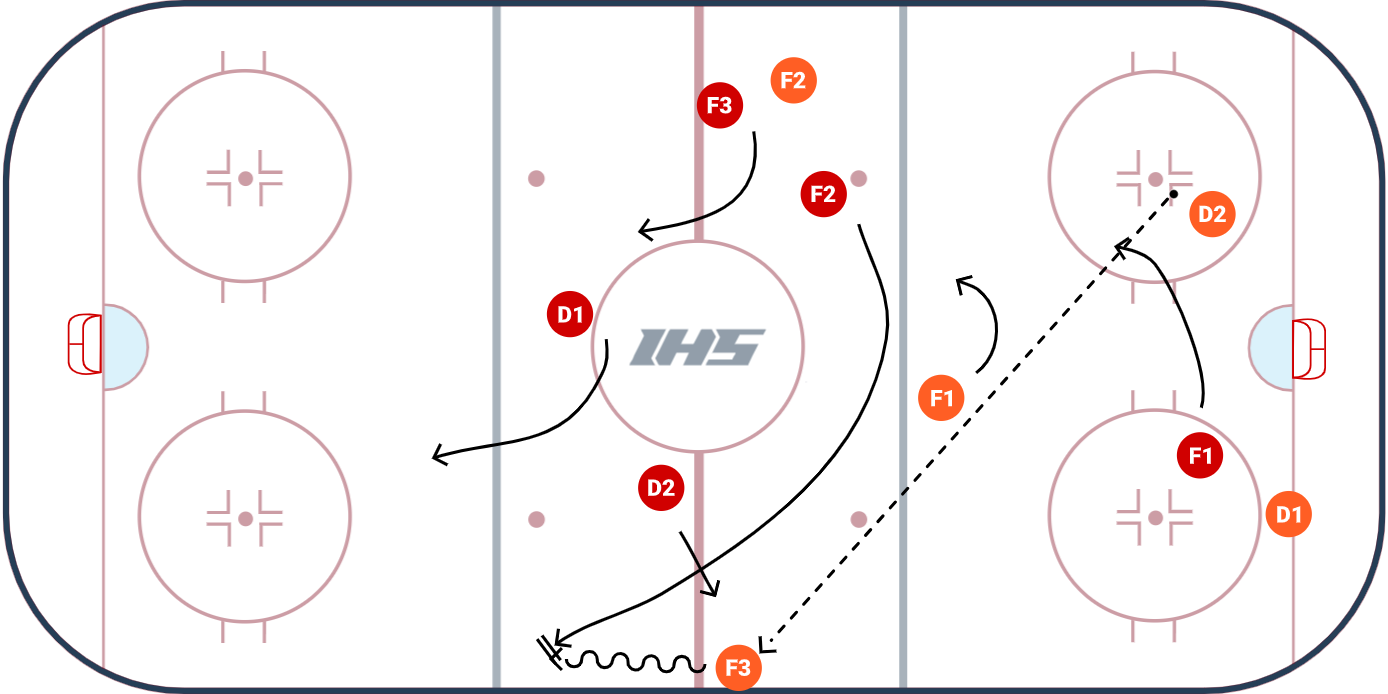How the Hurricanes' Left-Wing Lock Shut Down Edmonton in Game 7
Breaking down the Carolina Hurricanes left left-wing lock in the 2006 Stanley Cup Final

Note: This is directed to a more "tactics-savvy" hockey audience. If you're new to hockey and you want to stick around, I don't do any hand-holding with terminology. Although I plan on doing a Hockey 101 series soon.
In Game 7 of the 2006 Stanley Cup Final, the Carolina Hurricanes dominated the Edmonton Oilers in terms of physicality. One of those areas was the Canes' neutral zone play, specifically, their forecheck.

In the above play, F1 pressures the puck carrier (D1), who makes a cross-ice pass to his defensive partner and makes a swing play. D2 passes the puck back to D1, who swings with speed and attempts to carry the puck into the NZ.
The Hurricanes used the left-wing lock to force turnovers and prevent offensive zone entries. F1 pressures, F2 supports, and the three back players take the left, middle, and right lanes. Usually, the left wing takes the left lane, and the two defensemen take the middle and right.
Carolina notices that Edmonton doesn't have space, so Carolina's D2 pinches, D1 supports, and the F3 skates forward in anticipation of an odd-man rush. Eventually, the Hurricanes score their first goal of Game Seven.
The Canes make another strong NZ play to force a turnover and create an excellent scoring chance.

The left wing lock can be set up in a 1-1-3 formation or a 2-3 formation. Here, the Hurricanes are forechecking with a 2-3. The adjustment comes after F3's stick is broken, and he skates back to the bench to get a new one. Edmonton tries to exploit this with a quick-up. Edmonton's F2 skates into the NZ, attempting to open space for F1.
F3 reads the play and poke checks EDM F1 to create a turnover.
The third clip is a good example where you can see all of Carolina's players participating in a 1-1-3 left wing lock. The play is called offside before anything else can develop.

F3 has the left lane, D1 has the middle, and D2 makes a pinch along the boards. D1 is there to support D2 in the event of a turnover.
The Left Lane Lock
The F1's role in the left lane lock is to pressure the defensemen. Skate hard, finish hits, and recover. Depending on the system, F2 can fill F1's spot after they recover to create constant pressure, or F1 and F2 can forecheck together (2-3 system).
The F3 stays back to eliminate breakouts along the wall. Traditionally, the left wing is more defensively sound than the right wing. If possession changes, the F3 can skate forward as a high option, but if possession is lost, F3 must retreat. The left wing doesn't have to be the player to take the F3 role; it can be the most defensively skilled forward on a given line.
The defensemen shift to the right, with D1 in the middle and D2 on the right.
The left lane lock is also great at taking away the stretch pass, which is what Carolina did to the Edmonton Oilers.

